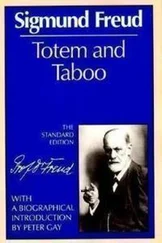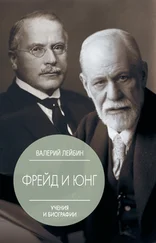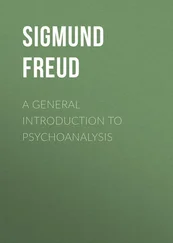Twenty-second Lecture
General Theory of the Neuroses - Theories of Development and Regression—etiology
We have learned that the libidio goes through an extensive development before it can enter the service of reproduction in a way which may be regarded as normal. Now I wish to present to you what importance this fact possesses for the causation of neuroses.
I believe we are in harmony with the teachings of general pathology in assuming that this development involves two dangers, inhibition and regression. In other words, with the universal tendency of biological processes toward variation, it must necessarily happen that not all preparatory phases of a given function are equally well passed through or accomplished with comparable thoroughness. Certain components of a function may be permanently held back in an early stage of development and the complete development is therefore retarded to a certain extent.
Let us seek analogies for these processes from other fields. If a whole people leaves its dwellings to seek a new home, as frequently happened in the early periods of the history of mankind, their entire number will certainly not reach the new destination. Setting aside other losses, small groups or associations of these wandering peoples would stop on the way, and, while the majority passes on, they would settle down at these way–stations. Or, to seek a more appropriate comparison: You know that in the most highly evolved mammals, the male seminal glands, which originally are located in the far depths of the abdominal cavity, begin to wander during a certain period of intra–uterine life until they reach a position almost immediately under the skin of the pelvic extremity. In the case of a number of male individuals, one of the paired glands may as a result of this wandering remain in the pelvic cavity, or may be permanently located in the canal through which both glands must pass in their journey, or finally the canal itself may stay open permanently instead of growing together with the seminal glands after the change of position has taken place normally. When, as a young student, I was doing my first piece of scientific research under the direction of von Brücke, I was working on the dorsal nerve–roots in the spinal cord of a small fish very archaic in form. I discovered that the nerve ganglia of these roots grow out from large cells which lie in the grey matter of the dorsal column, a condition no longer true of other vertebrates. But I soon discovered that such nerve cells are found outside the grey matter all the way to the so–called spinal ganglion of the dorsal root. From this I concluded that the cells of this group of ganglia had traveled from the spinal cord to the roots of the nerves. This same result is attested by embryology. In this little fish, however, the entire path of the journey was traceable by the cells that had remained behind. Closer observation will easily reveal to you the weak points of these comparisons. Therefore let me simply say that with reference to every single sexual impulse, I consider it possible for several of its components to be held back in the earlier stages of development while other components have worked themselves out to completion. You will realize that we think of every such impulse as a current continuously driving on from the very beginning of life, and that our resolving it into individual movements which follow separately one upon the other is to a certain extent artificial. Your impression that these concepts require further clarification is correct, but an attempt would lead to too great digression. Before we pass on, however, let us agree to call this arrest of a partial impulse in an early stage of development, a fixation of the instinct.
Regression is the second danger of this development by stages. Even those components which have achieved a degree of progress may readily turn backward to these earlier stages. Having attained to this later and more highly developed form, the impulse is forced to a regression when it encounters great external difficulties in the exercise of its function, and accordingly cannot reach the goal which will satisfy its strivings. We can obviously assume that fixation and regression are not independent of each other. The stronger the fixations in the process of development prove to be, the more readily will the function evade external difficulties by a regression back to those fixations, and the less capable will the fully developed function be to withstand the hindrances that stand in the way of its exercise. Remember that if a people in its wandering has left large groups at certain way–stations, it is natural for those who have gone on to return to these stations if they are beaten or encounter a mighty foe. The more they have left on the way, however, the greater is their chance of defeat.
For your comprehension of the neuroses it is necessary to keep in mind this connection between fixation and regression. This will give you a secure hold upon the question of the cause of neuroses—of the etiology of neuroses—which we shall soon consider.
For the present we have still to discuss various aspects of regression. With the knowledge you have gained concerning the development of the function of libido, you must expect two kinds of regression: incestuous return to the first libidinous objects and return of the entire sexual organization to an earlier stage of development. Both occur in the transference neuroses and play an important part in its mechanism. Especially is the return to the first incestuous objects of libido a feature that the neurotic exhibits with positively tiresome regularity. We could say far more about regression of libido if we took into consideration another group of neuroses: neurotic narcism. But we cannot do this now. These conditions give us a clue to other stages of development of the function of libido, which have not been mentioned previously, and correspondingly show new kinds of regression. But I think the most important task before me at this point is to warn you not to confuse regression and suppression , and aid you to see clearly the connection between the two processes. Suppression, as you know, is the process by which an act capable of becoming conscious, in other words, an act that belongs to the fore–conscious system, is rendered unconscious and accordingly is thrust back into the unconscious system. Similarly we speak of suppression when the unconscious psychic act never has been admitted into the adjoining fore–conscious system but is arrested by the censor at the threshold. Kindly observe that the conception of suppression has nothing to do with sexuality. It describes a purely psychological process, which could better be characterized by terming it localized . By that we mean that it is concerned with the spatial relationships within the psyche, or if we drop this crude metaphor, with building up the psychological apparatus out of separate, psychic systems.
Through these comparisons we observe that up to this point we have not used the word regression in its general, but in a very special sense. If you accord it the general meaning of return from a higher to a lower stage of development you must include suppression as a form of regression, for suppression may also be described as the reversion to an earlier and lower stage in the development of a psychic act. Only in regard to suppression, this tendency to revert is not necessarily involved, for when a psychic act is held back in the early unconscious stage we also term it suppression in a dynamic sense. Suppression is a localized and dynamic conception, regression purely descriptive. What up this point we have called regression and considered in its relation to fixation, was only the return of libido to former stages of its development. The nature of this latter conception is entirely distinct and independent of suppression. We cannot call the libido regressions purely psychical processes and do not know what localization in the psychological apparatus we should assign to them. Even though the libido exerts a most powerful influence on psychic life, its organic significance is still the most conspicuous.
Читать дальше







